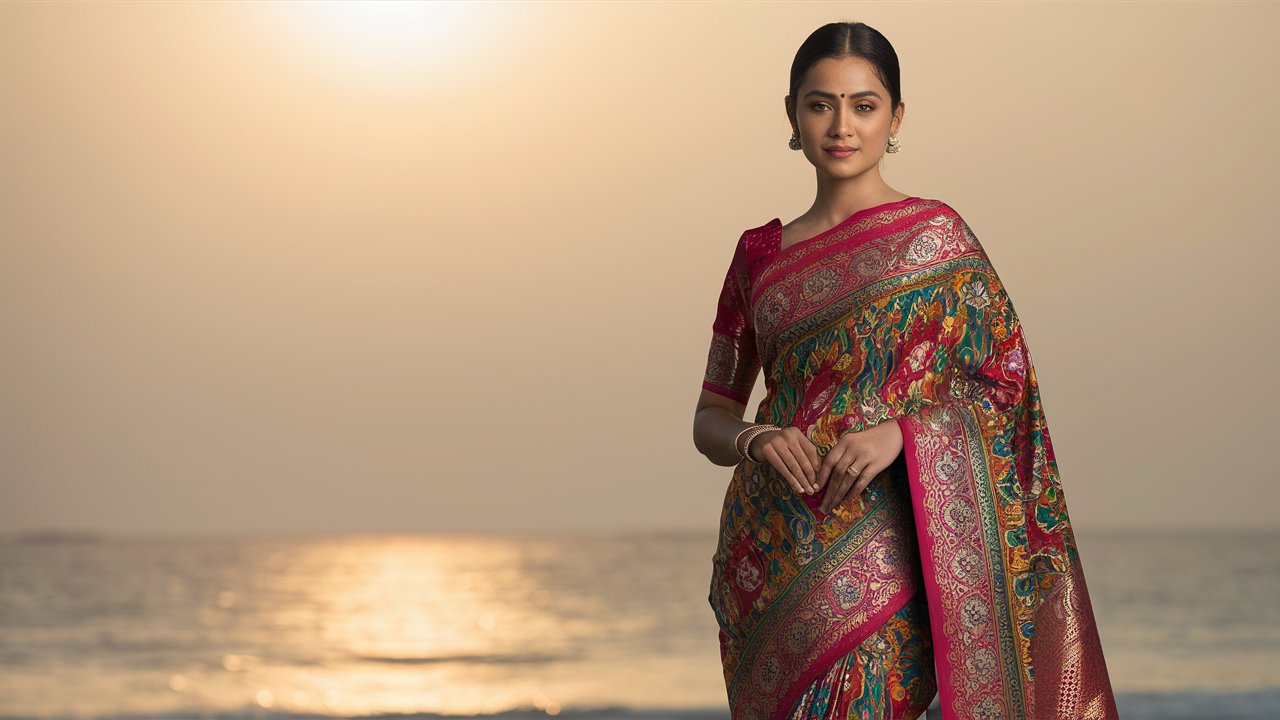India, a land of rich heritage and diverse traditions, boasts an array of cultural symbols that resonate deeply with its people. Among these symbols, the saree holds a special place. This timeless attire is not just a piece of clothing but a representation of India’s history, artistry, and identity. Let us explore why the saree is so important in India.
1. A Symbol of Tradition
The saree is deeply rooted in Indian traditions. For centuries, women across India have worn sarees on various occasions, ranging from daily wear to festivals and weddings. It is a garment that connects generations, with mothers passing down sarees to their daughters as cherished heirlooms. The saree is often associated with rituals and ceremonies, symbolizing purity and grace.
2. Represents Cultural Diversity
India is a country of varied cultures, and the saree reflects this diversity beautifully. Each region has its unique style of saree, characterized by distinct weaving techniques, patterns, and materials. For example:
- Banarasi Saree (Uttar Pradesh): Known for its intricate zari work and luxurious silk.
- Kanjeevaram Saree (Tamil Nadu): Famous for vibrant colors and heavy gold borders.
- Bandhani Saree (Rajasthan and Gujarat): Recognizable by its tie-dye patterns.
- Chanderi Saree (Madhya Pradesh): Lightweight and adorned with fine motifs.
These regional variations highlight the saree’s role as a canvas of India’s artistic heritage.
3. Emblem of Feminine Elegance
The saree is often seen as a symbol of elegance and femininity. Its drape enhances the natural grace of a woman’s figure, making it a preferred choice for formal occasions. The flexibility of the saree—which can be draped in over 100 different ways—allows women to express their individuality while adhering to cultural norms.
4. Versatility in Style
One of the unique aspects of the saree is its versatility. It suits all body types and can be styled to fit different occasions:
- Casual Wear: Simple cotton sarees for daily comfort.
- Festive Look: Embroidered or silk sarees for festivals.
- Office Wear: Subtle colors and lightweight fabrics for a professional look.
- Bridal Attire: Heavy, ornate sarees for weddings.
This adaptability ensures that the saree remains relevant in modern times while staying true to its traditional roots.
5. Boosts Local Economies
The saree industry plays a significant role in supporting local artisans and weavers. Handloom sarees, in particular, are a testament to India’s craftsmanship. By purchasing sarees, people contribute to sustaining these age-old weaving traditions and providing livelihoods to countless families. Government initiatives like “Make in India” and exhibitions promoting handloom sarees have further highlighted their economic importance.
6. A Timeless Fashion Statement
Despite the influx of western attire, the saree has managed to remain a fashion staple. Designers continuously reinvent this traditional garment, blending contemporary trends with classic designs. From Bollywood celebrities to global icons, the saree has been embraced worldwide, cementing its status as a timeless fashion statement.
7. Symbol of Empowerment
In modern India, the saree is also a symbol of empowerment. Women from different walks of life—be it politics, sports, or business—proudly wear sarees to represent their roots. It serves as a reminder that tradition and progress can coexist harmoniously.
8. Sustainability and Eco-Friendliness
In an era where fast fashion dominates, sarees stand out as a sustainable choice. Many sarees are made from natural fibers like cotton, silk, and jute, making them eco-friendly. Additionally, their durability ensures they can be reused and repurposed for years, reducing waste.
9. Emotional and Sentimental Value
A saree often carries emotional significance. It could be a gift from a loved one, a part of a bride’s trousseau, or a memento from a special occasion. These emotional connections make sarees more than just garments; they become stories woven into fabric.
10. Global Recognition
The saree has transcended Indian borders, gaining recognition on international platforms. It has been showcased at global fashion weeks and worn by international celebrities. This global admiration highlights its universal appeal and the richness of Indian culture.
Conclusion
The sarees importance in India goes beyond its aesthetic appeal. It is a symbol of tradition, a canvas of cultural diversity, and a means of empowerment. Its versatility, sustainability, and emotional value ensure that it continues to hold a cherished place in Indian society. Whether worn by a rural artisan or a global icon, the sarees remains a timeless representation of India’s heritage and pride.












